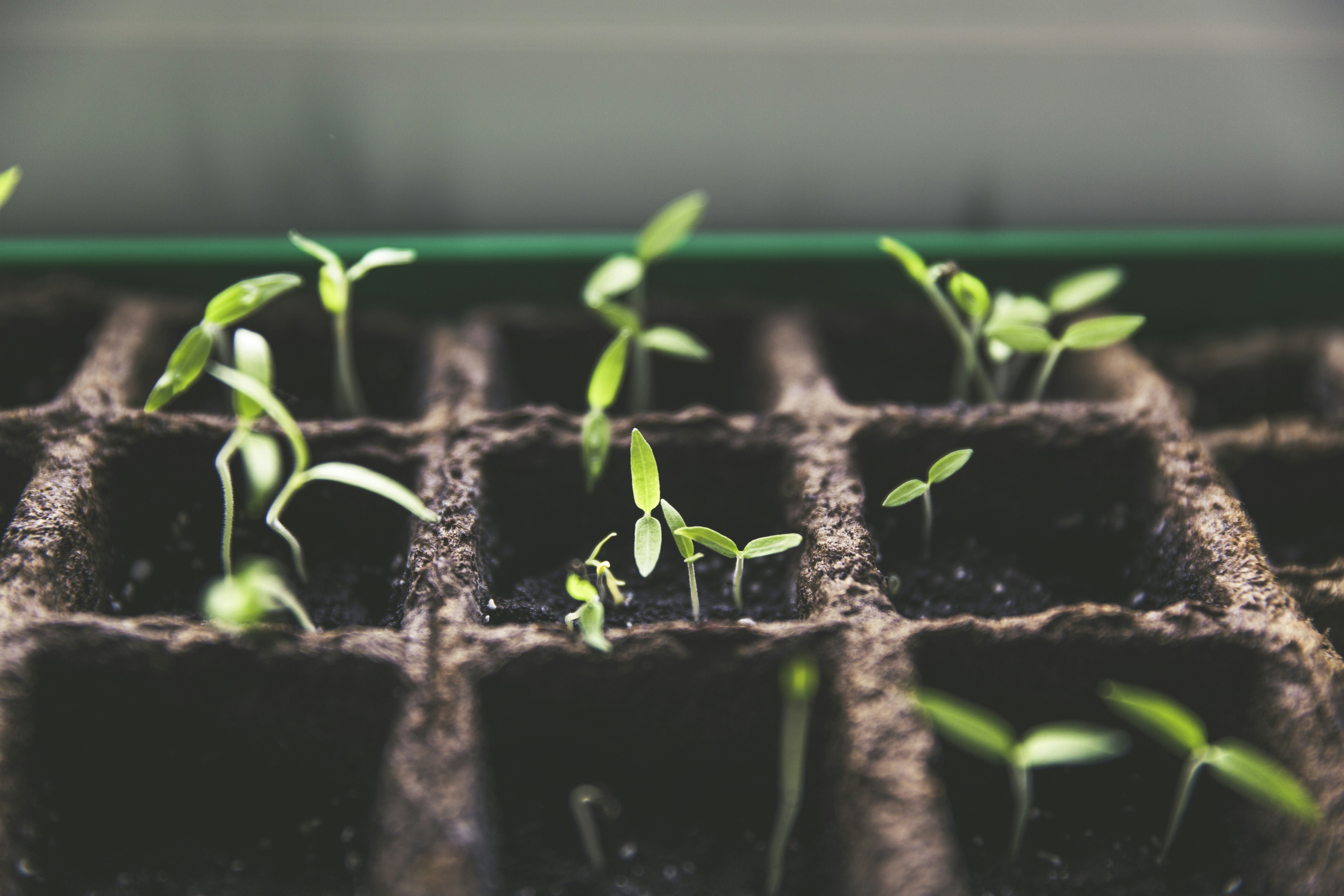👋 Click the mic button to talk to Alfred, the Todd's Seeds Gardening/Sprouting Expert – Feel free to ask him anything!
Ask Virtual Todd Anything - Click the Mic
Are you looking to create a flourishing container garden but not sure where to start? If so, you’re in the right place! This article will provide you with all the essential tips and tricks to help you grow a successful container garden. Whether you have limited outdoor space or simply prefer the convenience of gardening in containers, we’ve got you covered. From choosing the right container and soil to selecting the perfect plants and providing proper care, we’ll guide you through every step of the process. So, get ready to transform your space into a vibrant oasis with your very own container garden! Growing a successful container garden can be a rewarding and enjoyable experience. Whether you have limited space, a desire to grow your own food, or simply want to add a touch of nature to your surroundings, container gardening allows you to cultivate plants in containers of various sizes and shapes. To ensure your container garden thrives, it is important to make informed choices when it comes to selecting containers, determining the appropriate location, choosing the right soil, implementing effective watering and fertilizing techniques, selecting suitable plants, providing adequate support, using proper planting techniques, managing pests and diseases, and conducting regular maintenance. Let’s explore each aspect in detail to help you grow a thriving container garden.
Choosing the Right Containers
When it comes to selecting containers for your plants, it is crucial to consider the size and type of plants you intend to grow. Larger plants require bigger containers with sufficient root space, while smaller plants can thrive in smaller containers. Additionally, different plants have varying growth patterns, such as trailing, compact, or bushy. Understanding the growth habits of your plants will help you choose containers that can accommodate their specific needs.
In addition to plant size and type, evaluating the drainage system of your containers is vital. Containers should have drainage holes to prevent waterlogging, which can lead to root rot. Proper drainage ensures that excess water can escape and prevents your plants from becoming waterlogged.
The material of the container also plays a significant role in the success of your container garden. The most common materials for containers are clay/ceramic, plastic, and wood. Each type has its own advantages and disadvantages in terms of insulation, weight, and water retention. Consider the specific needs of your plants and the weather conditions in your area when deciding on the appropriate material for your containers.
Furthermore, the depth of the container is an essential factor to consider. Plants with deep root systems, such as tomatoes or carrots, require containers with sufficient depth to allow their roots to grow and develop properly. Shallow-rooted plants, on the other hand, can thrive in shallower containers.
Lastly, opt for containers with sufficient width to allow ample space for your plants to spread their roots and grow. Crowded plants can struggle to grow and may not reach their full potential.
Picking the Suitable Location
Determining the appropriate location for your container garden is crucial for the success of your plants. The amount of sunlight required by your plants is one of the primary factors to consider. Most plants thrive in full sun, which typically means at least six to eight hours of direct sunlight daily. However, some plants, such as herbs or leafy greens, can tolerate partial shade. Understanding the sunlight requirements of your plants will help you choose the most suitable location for your container garden.
In addition to sunlight, the ideal temperature for your plants should be taken into account. Some plants thrive in cooler temperatures, while others prefer warmer conditions. Research the specific temperature preferences of your plants and choose a location that suits their needs.
Consider the level of wind exposure in the chosen location. Strong winds can damage plants, especially those with delicate foliage or shallow root systems. If your chosen location is prone to strong winds, provide some protection for your plants by using barriers or placing them in wind-sheltered areas.
Furthermore, evaluate the available space in your chosen location. Ensure that there is enough room for your containers to be placed without overcrowding. Adequate spacing allows for proper air circulation and prevents plants from competing for resources.
Lastly, optimize accessibility when selecting the location for your container garden. Choose a spot that is easily accessible to you for watering, fertilizing, pruning, and harvesting. Having your container garden in a convenient location will make maintenance tasks more manageable and enjoyable.

Selecting the Proper Soil
Choosing the right soil is essential for the growth and development of your container plants. Well-draining soil is vital to prevent waterlogging and promote healthy root growth. Avoid using garden soil, as it tends to be too heavy and may not provide adequate drainage. Instead, opt for potting mix or a combination of potting soil, perlite, and vermiculite, which provide a good balance of water retention and drainage.
In addition to drainage, ensure that your soil has good nutrient content. Plants rely on nutrients present in the soil for their growth and development. Consider adding compost or organic matter to enrich the soil and provide essential nutrients. This will help your plants thrive and produce healthy foliage and fruits.
The pH level of the soil is also an important factor to consider. Different plants have different pH preferences. While most plants prefer slightly acidic to neutral soil (pH 6.0-7.0), some plants, such as blueberries, prefer more acidic soil. Consider the pH requirements of your plants and adjust the soil accordingly using amendments if necessary.
Avoid compaction of the soil in your containers, as it can hinder root growth and nutrient absorption. Gently loosen the soil before planting and refrain from compacting it too tightly. This will create a favorable environment for your plants to thrive.
Lastly, include organic matter in your soil mix. Organic matter improves soil structure, moisture retention, and nutrient availability. It also encourages beneficial microbial activity, which aids in the breakdown of organic matter and makes nutrients more accessible to plants.
Watering Techniques
Proper watering techniques are crucial for the health and vitality of your container garden. Determining the watering frequency for your plants depends on several factors, including the type of plant, container size, weather conditions, and soil moisture levels. Some plants require more frequent watering, while others prefer drier conditions. Observe your plants and monitor the moisture level of the soil to determine the appropriate watering frequency.
Seasonality also plays a role in watering. During hot and dry periods, your plants will likely require more water. Conversely, during cooler and rainy periods, reduce the frequency of watering to avoid waterlogging. Adjust your watering schedule accordingly to ensure your plants receive the right amount of water.
Avoid overwatering, as it can lead to root rot and other fungal diseases. Allow the top inch of the soil to dry out before watering again. Inserting your finger in the soil is a simple way to check the moisture level. If it feels dry, it’s time to water.
Water consistently to promote healthy root growth. Avoid irregular watering patterns, as they can stress your plants and cause problems such as blossom end rot or fruit cracking. By watering consistently, your plants will establish a stable root system and be better equipped to handle fluctuations in weather conditions.
Consider using a drip irrigation system to automate the watering process and ensure consistent moisture levels. Drip irrigation delivers water directly to the plant’s roots, minimizing water waste and reducing the risk of overwatering or underwatering. It is a convenient and efficient watering method for container gardens.

Fertilizing Tactics
Proper fertilizing is essential for supplying your plants with the necessary nutrients for optimal growth and productivity. Understanding the nutrient requirements of your plants is the first step. Different plants have varying needs for nutrients such as nitrogen, phosphorus, and potassium. Research the specific requirements of your plants and choose fertilizers that provide the appropriate nutrients in the required amounts.
Select suitable fertilizers based on their formulation, such as slow-release granules, liquid fertilizers, or organic fertilizers. Slow-release fertilizers gradually release nutrients over time, providing a steady supply to your plants. Liquid fertilizers are quickly absorbed by plants and can be applied during watering. Organic fertilizers, such as compost or manure, improve soil fertility and provide a range of essential nutrients.
When applying fertilizers, it is crucial to follow the recommended amounts and application guidelines. Over-fertilization can burn plant roots and damage your plants, while under-fertilization can result in nutrient deficiencies and stunted growth. Read the product labels carefully and apply fertilizers according to the manufacturer’s instructions.
Follow a regular fertilizing schedule throughout the growing season to ensure your plants receive a consistent supply of nutrients. This will support their growth, flowering, and fruit production. Consider using a calendar or reminder system to keep track of your fertilizing schedule and prevent missed applications.
Organic fertilizers offer a sustainable and environmentally friendly option for container gardens. They provide a slow-release of nutrients, improve soil structure, and support beneficial microbial activity. Using organic fertilizers helps create a healthy and balanced ecosystem in your container garden.
Plant Selection
Choosing the right plants for your container garden is vital to ensure their successful growth and productivity. Not all plants are suitable for container cultivation, so it is important to make informed choices.
Consider selecting plants that are known to thrive in containers. These plants are typically more compact and have smaller root systems, making them well-suited for confined spaces. Examples of plants suitable for containers include herbs, leafy greens, tomatoes, peppers, strawberries, and dwarf fruit trees.
Opt for small or dwarf varieties of plants whenever possible. These varieties are bred to be more compact and have a smaller mature size. They are ideal for container gardening as they require less space and can be easily accommodated in smaller containers.
Evaluate the growth habit of your chosen plants. Some plants, such as climbing vines or trailing plants, require support structures like trellises or stakes to grow properly. Ensure that your containers are suitable for installing such support systems if needed.
Understand companion planting and consider it when selecting plants for your container garden. Companion planting involves growing different plant species together to benefit from their interactions. Some plants repel pests, while others attract beneficial insects or improve soil fertility. Research companion planting combinations that can enhance the health and productivity of your plants.
Research the specific requirements of the plants you intend to grow. Different plants have varying needs for sunlight, water, and nutrients. Some plants prefer acidic soil, while others prefer slightly alkaline conditions. By understanding your chosen plants’ requirements, you can provide optimal conditions for their growth and increase the likelihood of a successful container garden.
Providing Adequate Support
Some plants require support to grow properly and prevent damage or breakage. Identify the plants in your container garden that may need support, such as tall-growing vegetables, climbing vines, or top-heavy plants.
Select appropriate trellises or stakes to support your plants. Trellises are ideal for climbing plants, while stakes are suitable for taller or top-heavy plants. Ensure that the trellises or stakes are strong enough to withstand the weight of the plants and securely anchor them to prevent toppling.
Properly secure the support system to the containers to provide stability. This is especially important for plants with vigorous growth that may exert pressure on the support structure. Use ties or clips to secure the plants to the support system and regularly check for any signs of damage or instability.
Monitor the growth of your plants regularly to ensure they are properly supported. As plants grow, their support needs may change. Some may require pruning or training to maintain their desired shape or prevent overgrowth. Adjust your support system accordingly to accommodate the changing needs of your plants.
Pruning and training plants can help maintain their shape, promote better airflow, and prevent overcrowding. Regularly inspect your plants and remove any dead or damaged growth. Train vines or climbers along trellises or stakes to prevent tangling and ensure proper growth.
Proper Planting Techniques
Proper planting techniques are vital to provide your plants with a good start and encourage healthy growth. Before planting, prepare your containers by cleaning them thoroughly and ensuring they have adequate drainage holes. This will prevent the buildup of harmful pathogens and provide optimal growing conditions for your plants.
Ensure proper spacing between plants in your containers. Overcrowding can lead to competition for resources, increased pest and disease susceptibility, and restricted growth. Follow the spacing guidelines provided for each plant or consult a gardening resource for recommended spacing distances.
Handle plants gently when transferring them to their containers. Avoid damaging the delicate roots and foliage. Gently loosen the roots and remove any excess soil before planting. This will encourage proper root development and establish a healthy foundation for your plants.
Plant at the correct depth to promote healthy growth. The top of the plant’s root ball should be level with the surface of the soil in the container. Planting too shallow or too deep can lead to problems such as drying out or suffocating the roots. Carefully position the plant in the container and fill in with soil, gently firming the soil around the roots.
Provide initial watering after planting to help settle the soil around the roots and remove any air pockets. Water thoroughly until the excess water drains out of the bottom of the container. This will ensure that the roots have good contact with the soil and establish a strong foundation for growth.

Pest and Disease Management
Implementing preventive measures is essential to manage pests and diseases in your container garden. Regularly inspect your plants for any signs of pests or diseases. Early detection allows for timely intervention and minimizes the risk of damage.
Monitor your plants regularly to identify common pests such as aphids, spider mites, or whiteflies. Look for signs of damage, such as chewed leaves, wilting, or discoloration. A magnifying glass can help identify pests that are too small to see with the naked eye.
Identify common diseases in plants, such as powdery mildew, root rot, or fungal infections. Look for symptoms such as yellowing or spotted leaves, stunted growth, or wilting. Timely identification and proper diagnosis are crucial for effective disease management.
Choose suitable pest control methods based on the type and severity of infestation. Natural methods such as handpicking pests, using insecticidal soaps or oils, or introducing beneficial insects can help control pest populations. In severe cases, chemical treatments may be necessary. Follow the instructions on pest control products carefully and avoid using excessive amounts.
Utilize organic treatments whenever possible to minimize the use of harsh chemicals and maintain a healthy ecosystem in your container garden. Neem oil, insecticidal soaps, or homemade remedies such as garlic or chili pepper sprays can help control pests without causing harm to beneficial insects or the environment.
Regular maintenance and cleanliness are essential for managing pests and diseases. Remove any dead or decaying plant material, as it can harbor pests or provide a breeding ground for disease. Clean your containers regularly to prevent the buildup of harmful pathogens. Sanitize your tools, such as pruning shears, between uses to avoid spreading diseases from one plant to another.
Harvesting and Maintenance
Monitoring your plants for optimal harvest time is an exciting part of container gardening. Different plants have different indicators of readiness for harvest, such as color change, fruit firmness, or size. Research the specific signs for each plant or consult gardening resources to determine the ideal harvest time.
Use proper harvesting techniques to avoid damaging your plants or reducing their future productivity. Use clean and sharp tools, such as garden shears or scissors, to cut fruits or vegetables. Harvest leafy greens by gently pulling the mature leaves from the outer edges of the plant. Harvesting at the right time ensures the best flavor, texture, and nutritional value.
Regularly inspect and maintain your containers to ensure the health and vitality of your plants. Remove any dead or diseased plant material promptly to prevent the spread of diseases or pests. Clean your containers periodically to remove any buildup of salts or minerals. This will help maintain proper soil moisture and prevent nutrient imbalances.
Clean and sanitize your containers as needed, especially before planting new crops or at the end of the growing season. Rinse containers thoroughly with water and use a diluted bleach solution to sanitize them. This helps eliminate any lingering diseases or pests and provides a clean start for your plants.
Plan for crop rotation and succession planting to optimize space and promote soil health. Crop rotation involves changing the location of plants from season to season to minimize the buildup of pests or diseases. Succession planting refers to planting new crops as soon as one is harvested, extending the growing season and maximizing productivity.
By following these comprehensive guidelines for growing a successful container garden, you can create a thriving and bountiful space filled with healthy plants. From selecting the right containers and location to providing adequate support, using proper planting techniques, and managing pests and diseases, every step contributes to the overall success of your container garden. With time, patience, and a little TLC, you can enjoy the beauty and rewards of growing your own plants in containers. Happy gardening!

